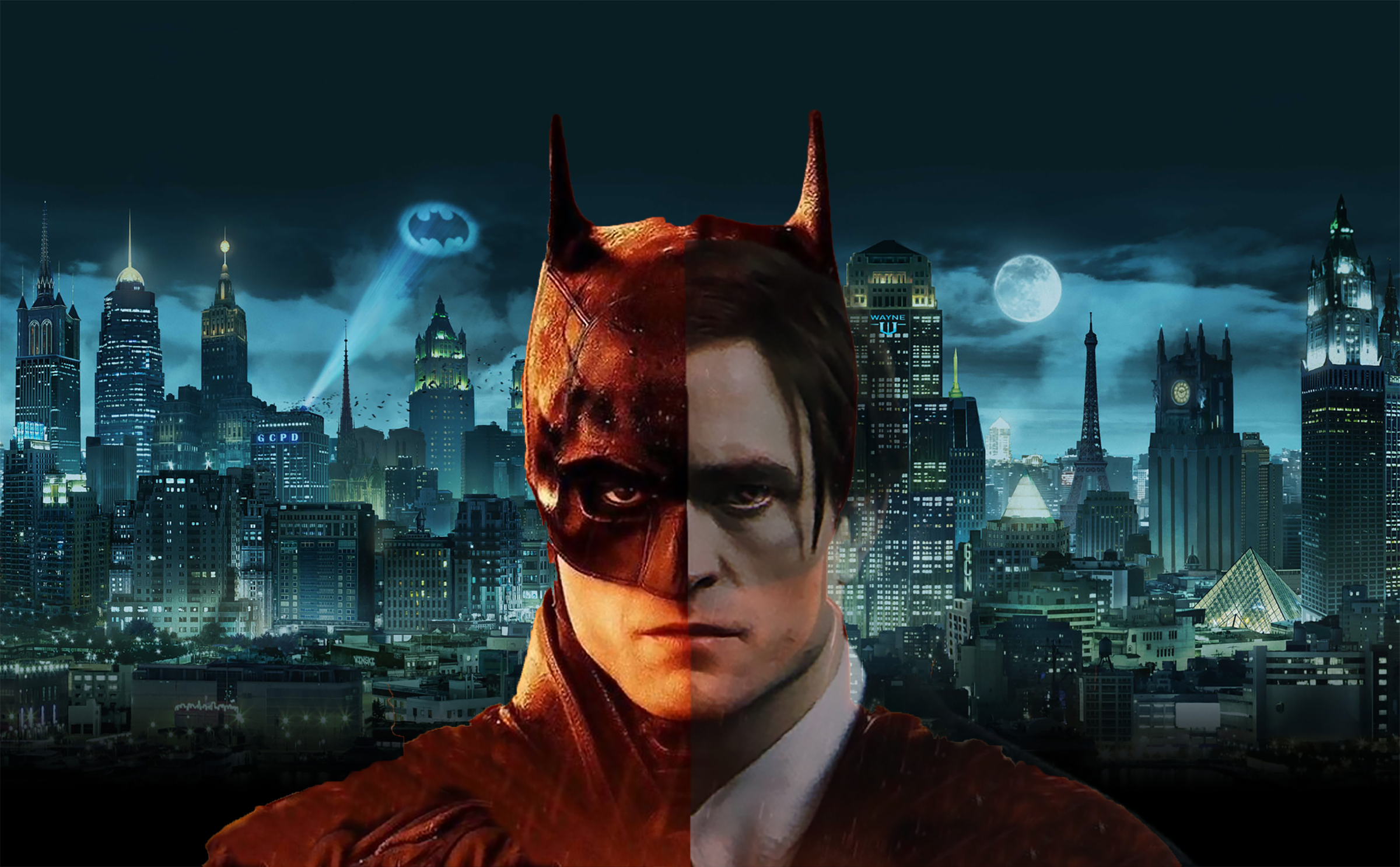Opinion | “The Batman,” marks renaissance period for DC Films
Director Matt Reeves’ “The Batman” proves an emphasis on realism could mark a renaissance period for DC Films. Photo collage by DANIEL PEARSON, Photo Editor
As a casual fan of superhero movies, projects from DC Films have always been a hit or miss for me. However, there has been a noticeable quality shift from the studio over the years, and Matt Reeves’ “The Batman” is a perfect example of that.
Reeves’ latest piece is a showcase of how DC Films has nailed the “realistic” approach to some of their films, which has set themselves apart from the competition to create a renaissance of sorts for the company.
Benjamin Moscoso, sophomore documentary and broadcast journalism major
“The Batman” is a separate story for the iconic hero outside of any previous DC films that has Batman (Robert Pattinson) investigate the recent crimes of The Riddler (Paul Dano) as the entirety of Gotham City falls in shambles due to political abuse and the corruption of higher individuals.
Being deeply involved in the city due to his family name, Bruce Wayne goes through a variety of tasks to solve The Riddler’s mystery, where he must receive assistance from Lieutenant James Gordon (Jeffery Wright), Catwoman (Zoë Kravitz) and The Penguin (Colin Farrell). Throughout the film, Wayne is forced to go through multiple tragedies and personal realizations to ultimately fight for the bigger picture — Gotham itself.
It is the film’s portrayal of corruption, hardships and reality that truly sets it apart. The most impressive feat of this piece is the city of Gotham itself, which makes it seem as if the main cast only serves to support the setting.
This is emphasized by the marvelous cinematography deployed in showcasing Gotham, with several shots genuinely being moments that have the potential to be remembered forever within the broad history of film.
In that respect, the story isn’t necessarily about Bruce Wayne as a person but rather his experience and the decisions he must make that revolve around the frighteningly raw city he lives in.
That’s not to say the cast was overshadowed; on the contrary, every single cast member took their roles to heart and perfectly imitated the fictitious surroundings they were placed in, to the point where it felt as if they had all gone through the same hardships before. Kravitz and Farrell specifically were effective in portraying their seemingly intertwined conflicts in a way that ultimately revolves around the city that is haunting them both.
In the same light, Wright’s role as James Gordon is a brilliant demonstration of how one can find a spark of hope in an ocean of darkness, as his actions and decisions in the film make him the perfect accompaniment for The Dark Knight.
However, Pattinson’s portrayal of Batman needs to be discussed the most. There is absolutely no doubt that Pattinson’s Batman is incredible; he captured the gloominess and grit that goes beyond expectations for the character.
Unfortunately, Pattinson’s portrayal of Bruce Wayne is one that is lackluster. Whereas Batman portrayals of the past have distinct differences between Wayne as himself and Wayne as Batman in terms of character and public presentation, Pattinson’s Wayne blends in too much of the Batman persona. The result is that the two characters — Batman and Wayne — seem almost identical when, ironically, they are meant to be different.
But Pattinson’s portrayal of Wayne still works well in the overall context of the reality he is placed in, with his portrayal of Batman being near flawless in terms of how Batman is typically perceived as a character. And it is that level of worldbuilding and depth to a character’s sense of reality that has improved DC Films’ projects immensely over the years.
Where DC Films seems to fall flat is when portraying characters and worlds that revolve around the “magic” that comes from that certain superhero; this is the reason that films like “Batman v Superman: Dawn of Justice,” “Justice League,” and “Aquaman” are all flawed.
Simply put, DC Films does not do these types of films better than the competition.
In contrast, the storytelling of DC Films is most effective when there is a heavy sense of reality. Films like “Joker” and even “Birds of Prey” place more emphasis on capturing that sense of reality, which is ultimately responsible for these films’ increased success relative to other movies from DC Films.
Reeves’ “The Batman” yet again allows viewers to immerse themselves in Wayne’s world, from its incredible depiction of Gotham City to its grim portrayal of its characters. Given the imperfections that are present in this already great film, there is no doubt in my mind that there is room to improve and that this isn’t the peak of the company’s recent resurgence.
I can only hope that DC Films will continue to improve the quality of their projects and that perhaps they can reach new heights that no other superhero film has previously.



